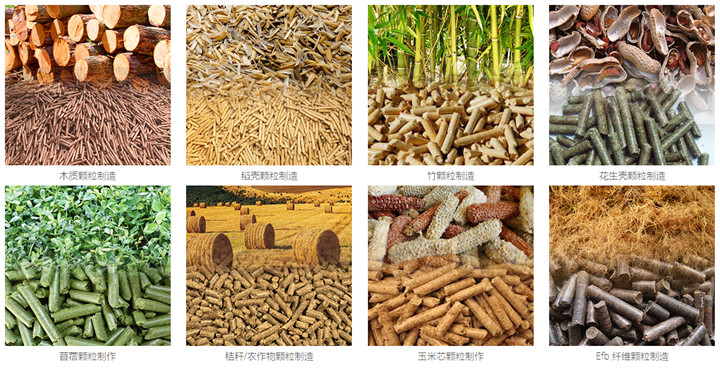In Indonesia, biomass pellet machines can use a lot of agricultural and forestry residues to make biomass pellets, which are abundant and renewable resources locally. The following is a further analysis of how these raw materials are used by biomass pellet machines to process biomass pellets:
1.Rice husk:
Due to the large rice production in Indonesia, rice husk resources are abundant.
Although the high silica content in rice husk may increase the ash content, rice husk can still be used to produce biomass pellets with proper pretreatment and process control.
2. Palm kernel shell (PKS):
As a by-product of palm oil production, PKS is an ideal raw material for biomass pellets.
PKS has the characteristics of high calorific value and low ash content, and can produce high-quality biomass pellets.
3. Coconut shell:
Coconut shell is widely available in Indonesia, with high calorific value and low ash content.
Coconut shell needs to be properly crushed and pretreated before production to improve the feasibility of pellet production.
4. Bagasse:
Bagasse is a byproduct of sugarcane processing and is easily available in sugarcane producing areas.
Bagasse has a moderate calorific value and is easy to handle, making it a sustainable raw material for biomass pellets.
5. Corn stalks and corn cobs:
As a byproduct of corn cultivation, corn stalks and corn cobs are widely available in Indonesia.
These materials need to be dried and crushed to meet the feed requirements of biomass pellet machines.
6. Peanut shells:
Peanut shells are a byproduct of peanut processing and are abundant in some areas.
Peanut shells also need to be pre-processed, such as drying and crushing, before they can be used in biomass pellet production.
When using these raw materials to produce biomass pellets, biomass pellet machines also need to consider the following factors:
7.Raw material collection and transportation: Ensure that the collection and transportation process of raw materials is efficient and economical to reduce production costs.
8.Pretreatment: Raw materials usually require pre-treatment steps such as drying, crushing and screening to meet the requirements of biomass pellet machines.
9.Process optimization: According to the characteristics of the raw materials, the process parameters of the pellet machine are adjusted to obtain better pellet quality and production efficiency.
10.Environmental protection and sustainability: Environmental protection requirements are considered during the production process to ensure that the impact of production activities on the environment is minimized while ensuring the sustainable use of raw materials.
In short, Indonesia’s abundant agricultural and forestry residues provide a sufficient source of raw materials for the production of biomass pellets. Through reasonable raw material selection and process optimization, high-quality and environmentally friendly biomass pellets can be produced, contributing to the local use of renewable energy.
Post time: Jul-09-2024










